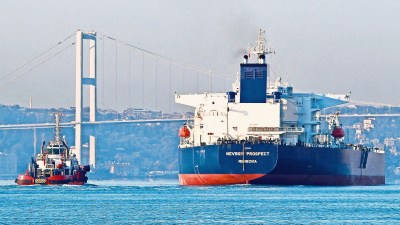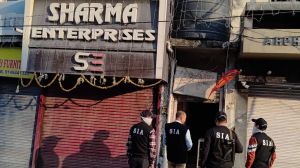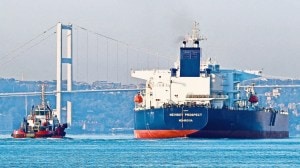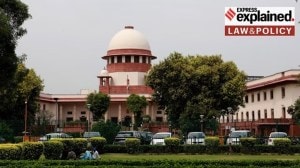Priya Kumari Shukla is a Senior Copy Editor in the Indian Express (digital). She contributes to the UPSC Section of Indian Express (digital) and started niche initiatives such as UPSC Key, UPSC Ethics Simplified, and The 360° UPSC Debate. The UPSC Key aims to assist students and aspirants in their preparation for the Civil Services and other competitive examinations. It provides valuable guidance on effective strategies for reading and comprehending newspaper content. The 360° UPSC Debate tackles a topic from all perspectives after sorting through various publications. The chosen framework for the discussion is structured in a manner that encompasses both the arguments in favour and against the topic, ensuring comprehensive coverage of many perspectives. Prior to her involvement with the Indian Express, she had affiliations with a non-governmental organisation (NGO) as well as several coaching and edutech enterprises. In her prior professional experience, she was responsible for creating and refining material in various domains, including article composition and voiceover video production. She has written in-house books on many subjects, including modern India, ancient Indian history, internal security, international relations, and the Indian economy. She has more than eight years of expertise in the field of content writing. Priya holds a Master's degree in Electronic Science from the University of Pune as well as an Executive Programme in Public Policy and Management (EPPPM) from the esteemed Indian Institute of Management Calcutta, widely recognised as one of the most prestigious business schools in India. She is also an alumni of Jamia Milia Islamia University Residential Coaching Academy (RCA). Priya has made diligent efforts to engage in research endeavours, acquiring the necessary skills to effectively examine and synthesise facts and empirical evidence prior to presenting their perspective. Priya demonstrates a strong passion for reading, particularly in the genres of classical Hindi, English, Maithili, and Marathi novels and novellas. Additionally, she possessed the distinction of being a cricket player at the national level. Qualification, Degrees / other achievements: Master's degree in Electronic Science from University of Pune and Executive Programme in Public Policy and Management (EPPPM) from Indian Institute of Management Calcutta ... Read More
UPSC Key—30th November, 2023: Five Eyes Alliance, Pradhan Mantri Garib Kalyan Anna Yojana and United National Liberation Front
Exclusive for Subscribers from Monday to Friday: Why Terrorism, Insurgency, Belligerency and Civil war are relevant to the UPSC Exam? What significance do topics like Article 280 of the Constitution, Particularly Vulnerable Tribal Groups, United States and Indian intelligence have for both the preliminary and main exams? You can learn more by reading the Indian Express UPSC Key for November 30, 2023.
 UPSC Key November 2023: Here's what you should be reading from the November 30, 2023 edition of The Indian Express (X/@NBirenSingh)
UPSC Key November 2023: Here's what you should be reading from the November 30, 2023 edition of The Indian Express (X/@NBirenSingh) Important topics and their relevance in UPSC CSE exam for November 30, 2023. If you missed the November 29, 2023 UPSC CSE exam key from the Indian Express, read it here
FRONT PAGE
US accuses Indian official of plotting to kill Pannun
Syllabus:
Preliminary Examination: Current events of national and international importance
Mains Examination: General Studies II: Bilateral, regional and global groupings and agreements involving India and/or affecting India’s interests.
Key Points to Ponder:
• What’s the ongoing story-United States federal prosecutors have accused an Indian intelligence official of planning and directing a plot, from India, to allegedly kill Khalistan separatist Gurpatwant Singh Pannun in New York. The plot allegedly involved another Indian citizen and two individuals, a source and a hitman, who turned out to be undercover US officers.
• What exactly United States federal prosecutors have accused?
• Who is Gurpatwant Singh Pannun?
• What does his organisation Sikhs for Justice do?
• Do You Know-Pannun, now in his mid to late 40s, comes from Khankot village on the outskirts of Amritsar. His is one of three children of a former Punjab State Agricultural Marketing Board employee named Mahinder Singh.
Pannun graduated in law from Panjab University sometime in the 1990s, and is today an attorney at law in the US. He is also frequently seen in Canada, often at pro-Khalistan functions and gatherings.
He is best known as the founder and leader of Sikhs for Justice, a pro-Khalistan advocacy organisation based in New York.
SFJ was formed in 2007 “with the express intent of achieving self-determination for the Sikh people in their historic homeland in the region of Indian held Punjab and establishing a sovereign state, popularly known as Khalistan,” its website says.
Canadian journalist Terry Milewski, the author of Blood for Blood: Fifty Years of the Global Khalistan Project (2021), had told The Indian Express earlier that “SFJ was formed with the overt recognition that the wanton use of violence had been the Khalistan movement’s Achilles heel.”
According to Milewski, “Just like the 1984 massacre of Sikhs in Delhi will forever be a stain on the Indian state, the 1985 Air India bombing will forever be a stain on the Khalistanis. And it was an absolute public relations disaster.” Pannun, Milewski said, had started SFJ with the motto of “ballots not bullets”.
Perhaps the SFJ’s most famous activity so far has been the so-called “Referendum 2020”. It was conducted among the Sikh diaspora in cities around the world, and SFJ claimed grand support for it. Milewski, however, scoffed at the “referendum” , its process, and outcome.
“The rules and identification requirements are farcical,” Milewski told The Indian Express. “I have a friend in London who logged on online to register to vote, put down Angelina Jolie as his name, and was successfully registered for the vote. Pannun and his ilk put up random, unverifiable numbers hailing the referendum’s success,” he said.
The Khalistan movement is all but dead in Punjab, and even among the Sikh diaspora abroad, Pannun’s movement has had very little traction. However, Pannun and the SFJ have managed to remain in the news through periodic statements against the Indian state, and in support of Khalistan.
• How has the government reacted to Pannun and the SFJ?
• What is Five Eyes Alliance?
• Why was the Five Eyes Alliance formed?
• How does the Five Eyes Alliance work, exactly?
• And how Five Eyes play a role in the current India-Canada and India-USA issue?
• How recent US allegation can impact India’s geopolitical structure?
• What you know about the Khalistan movement?
• What are the Historical events responsible for Khalistan?
• How Khalistan movement affected or can affect Indo-USA relationship?
• Khalistan and USA-Connect the dots
Other Important Articles Covering the same topic:
📍Who is Gurpatwant Singh Pannun, the alleged target of a planned hit job in the US?
Over 81 crore poor will get free grains for 5 more years
Syllabus:
Preliminary Examination: Economic and Social Development
Mains Examination:
• General Studies II: Government policies and interventions for development in various sectors and issues arising out of their design and implementation.
• General Studies II: Welfare schemes for vulnerable sections of the population by the Centre and States and the performance of these schemes
Key Points to Ponder:
• What’s the ongoing story- Amid polls in five states and with general elections just around the corner, the Union Cabinet has cleared the extension of the Pradhan Mantri Garib Kalyan Anna Yojana (PMGKAY) — which aims to provide free food grains to 81.35 crore people under the National Food Security Act (NFSA) — for five years beginning January.
The scheme is estimated to cost the government Rs 11.80 lakh in subsidies in five years, said an official statement.
• What is Pradhan Mantri Garib Kalyan Anna Yojana (PM-GKAY)?
• Pradhan Mantri Garib Kalyan Anna Yojana (PM-GKAY)-Know its key features
• Pradhan Mantri Garib Kalyan Anna Yojana (PMGKAY)-Benefits
• Pradhan Mantri Garib Kalyan Anna Yojana (PMGKAY)-Who all are eligible?
• What are the arguments for and against continuation of Pradhan Mantri Garib Kalyan Anna Yojana (PMGKAY)?
• What is National Food Security Act 2013?
• What are the three features of National Food Security Act 2013?
• What was the main aim of Food Security Act 2013?
• Salient features of the National Food Security Act, 2013
• What is National Food Security Act, 2013 (NFSA) eligibility?
• What Schedule II of the National Food Security Act says?
• For Your Information-The PMGKAY was introduced in 2020 during the Covid-19 pandemic to provide 5 kg free food grains to eligible ration card holders under the National Food Security Act, 2013 (NFSA). The NFSA, introduced by the UPA government at the time, entitled beneficiaries to receive subsidised food grains (at Rs 3, Rs 2 and Rs 1 per kilogram of rice, wheat and coarse grains, respectively) through the Targeted Public Distribution System (TPDS).
In late 2022, ahead of the Gujarat and Himachal Pradesh Assembly polls, the PMGKAY was extended until December 2022 and then for another year until December 2023, merging it with the NFSA. With the scheme nearing its expiry, the government has again extended it, this time for another five years.
The PMGKAY covers two kinds of ration card holders under the NFSA – for the Antyodaya Anna Yojana (AAY) and Priority Households (PHH). The NFSA covers about 20 crore families, or a total 81.35 crore beneficiaries, who account for two-thirds of the country’s population – 50% for urban and 75% for rural.
While the AAY households are entitled to 35 kg of food grains per month irrespective of the number of family members, the priority households get food grains depending on the number of family members (each member 5 kg per month).
Since the scheme was introduced in 2020, the government has allocated 1,118 lakh metric tonnes of food grains from its central procurement pool at a cost of Rs 3.9 lakh crore.
In January this year, the PMGKAY was merged with the NFSA, providing all ration for AAY and PHH families for free and eliminating the additional provisions introduced during the pandemic. “It has been merged (with the NFSA). The free portion of that scheme has been added to the NFSA. Now, the entire quantity of 5 kg and 35 kg under the NFSA would be available free of cost. There is no need for additional food grains,” said Union Food Minister Piyush Goyal
The discontinuation of the separate PMGKAY provisions came amid depleting stocks of food grains in the central pool and saved the government an estimated Rs 15,000 crore every month.
The government used to receive Rs 13,900 crore in a year from selling subsidised food grains under the NFSA. With this additional outgo, the total food security bill rose to about Rs 2.87 lakh crore in 2022-23.
In this year’s budget, the government has allocated just under Rs 2 lakh crore on all food subsidies, a significant decline from previous years. During the pandemic, the food subsidy outlay had peaked at Rs 5.41 lakh crore.
Other Important Articles Covering the same topic:
📍Free food grain scheme named ‘PM Garib Kalyan Anna Yojana’
THE IDEAS PAGE
Syllabus:
Preliminary Examination: General issues on Environmental ecology, Bio-diversity and Climate Change – that do not require subject specialization.
Mains Examination: General Studies III: Conservation, environmental pollution and degradation, environmental impact assessment.
Key Points to Ponder:
• What’s the ongoing story-Ashok Lavasa Writes: The stage is set for global leaders to come together in Dubai, a city in the UAE, which is part of the Gulf Cooperation Council. It is rich in natural resources, relying heavily on natural gas and oil for electricity and energy generation (95.7 per cent of energy is sourced from fossil fuels and renewable energy accounts for less than one per cent of actual consumption in the UAE). Even with recent efforts to transition to sustainable energy production, the region will continue to depend heavily on oil and gas as prime sources of energy according to projections for 2035.
• What is Conference of Parties (COP)?
• What is COP 28?
• What is expected at COP28?
• Why is an oil kingdom hosting COP28?
• Why does the host country matter?
• India at COPs historically-Examine
• Do You Know-Right from the 1992 Rio de Janeiro Earth Summit, which gave rise to the UN Framework Convention on Climate Change (UNFCCC), India has been trying to ensure that the burden of climate action does not disproportionately fall on the developing countries.
One of the foundations of UNFCCC has been the principle of Common But Differentiated Responsibilities and Respective Capabilities (CBDR-RC), which emphasises the point that while fighting climate change is everyone’s job, the rich and developed countries must bear the bulk of that responsibility, not just because they have caused most of the emissions but also because they have greater resources and capacity to act.
Indian negotiators played a lead role in the Kyoto Protocol at COP3 in 1997, which was based strongly on the principle CBDR-RC. A group of rich and developed countries were allotted specific emission cut targets, to be implemented in the 2008-2012 period, while the developing countries, including India and China, were free to take whatever “nationally appropriate” climate actions they deemed fit.
The Kyoto Protocol was inherently unstable because of the restrictions placed on the rich countries. The CBDR-RC principle was gradually eroded in every COP decision. In this period — between 2008 and 2015, when the Paris Agreement was finalised — India’s main effort at the COPs was to prevent this erosion as much as possible.
The Paris Agreement allows every country, including those developed, to decide and implement its climate actions. Everyone is supposed to have a climate action plan (called Nationally Determined Contributions, or NDCs), but no mandatory targets. Only a marginal distinction between the developed and developing countries has been retained, that too informally.
India at the recent COPs
In the past, India played its role largely in the background. This has changed in the recent years, and New Delhi has become more assertive and more forthcoming in offering its own narrative. Also, after the Paris Agreement, as one of the fastest growing economies, India’s conduct is tracked much more keenly.
At the 2021 Glasgow meeting, India blocked the final draft outcome at the last minute and got the “phase-out” of coal changed to “phase-down”. At the Sharm el-Shaikh meeting last year, India campaigned for a phase-down of all fossil fuels, not just coal, a proposal that is still too hot to handle for many countries. India has also been energetically talking about the need for lifestyle changes to bring down energy consumption and emissions. New Delhi has submitted two NDCs till now. The first NDC contained three targeted promises: India will reduce its emissions intensity, or emissions per unit of GDP, by 33 to 35% from 2005 levels by 2030; it will ensure that at least 40% of its installed electricity capacity in 2030 comprises of non fossil-fuel sources; it will create at least 2.5 to 3 billion tonnes of additional carbon sink through tree and forest cover. In its updated NDC, announced last year, India raised the targets of the first two promises, having already achieved the previous targets eight years in advance. It raised the emission intensity reduction target to 4 %, and the non fossil fuel-based electricity target to 50%. India has also launched some global initiatives on climate change that have received the backing of many countries. These initiatives are not part of the formal COP discussions but have been an important input.
The International Solar Alliance (ISA), which seeks to promote the installation of solar energy across the world, was launched at the 2015 Paris meeting. The ISA has now evolved into a full-fledged UN-affiliated multilateral agency. A similar model is being followed for the Coalition of Disaster Resilient Infrastructure (CDRI), which seeks to become the global knowledge centre for creation of more resilient infrastructure. The CDRI has been receiving a lot of interest from developing countries, especially the small island states at maximum risk from climate disasters.
India also got the International Energy Agency (IEA) to do an analysis of its proposals. The IEA analysis shows that simple lifestyle changes had the capability to reduce annual global carbon dioxide emissions by about 2 billion tonnes by 2030. It also said that nearly 60% of these savings could be directly mandated by the governments. India’s LiFE (Lifestyle for Environment) Mission is now much more acceptable to other countries, and found its way in the final outcome of the G20 summit in New Delhi earlier this year.
India’s Groups
• “The world remains divided between the historically responsible and the contemporary accused who believe they are being asked to pay”-Analyse
• “The most important, and keenly awaited, outcome from the perspective of 1.5 degree Celsius target is an agreement on tripling of global renewable energy installed capacity by 2030”-Discuss
• “The resource deficit is real on account of the gap between requirement and availability. It exemplifies the trust deficit”-Do you agree?
• What is Global Financial Stability Report?
• What is the Kyoto Protocol?
• What were the key takeaways from the Kyoto Protocol?
• What is the Paris Agreement and its purpose?
• Paris Agreement and Kyoto Protocol-Know the difference
• What is ‘common but differentiated responsibilities’?
• Which agreement recognised ‘common but differentiated responsibilities’?
• What is the Carbon Border Adjustment Mechanism (CBAM)?
• Why 1.5 degrees Celsius temperature rise is considered an important threshold?
• For Your Information-The present installed capacity of renewable energy is a little less than 3,400 GW and the idea is to expand it to over 11,000 GW by 2030. More than 60 countries, including the G20 group, have already endorsed this, a task considered eminently doable.
In itself, this would still not be adequate to hold the temperature rise within 1.5 degree Celsius but it’s absolutely crucial, nonetheless, in reducing significant amounts of emissions in the short term.
The International Energy Agency has estimated that tripling of renewable capacity has the potential to avoid about 7 billion tonnes of carbon dioxide equivalent emissions till 2030. That is about 1 billion tonnes every year on an average. Just as a comparison, all the other current climate actions are expected to result in a net reduction of just 1 billion tonnes of emissions in 2030 from the 2019 levels. COP28 has to deliver much more than just tripling of renewables.
One key agenda is to carry out a global stocktake (GST) of the climate crisis. It is a mandate from the Paris Agreement. Countries have to take stock of the situation every five years, beginning this year, to assess progress being made and decide on what more needs to be done.
The task is cut out. The world is not on track to meet any of the targets that science considers necessary to keep global warming within 1.5 degree Celsius.
In fact, the 1.5-degree threshold is already being breached repeatedly. As the latest Emissions Gap Report, an annual publication of the UN Environment Programme, pointed out, there were 86 days this year until October 15 when the daily average temperature was 1.5 degree Celsius higher than the respective pre-industrial averages.
Almost every month, this year has broken one or the other monthly warming record. It is almost certain that this year will emerge as the warmest ever and it would be no surprise if the annual average breaches the 1.5 degree threshold too. It is not expected to be too long before such a breach becomes the norm.
And yet, climate plans are as inadequate as ever. The annual global emissions are still rising when they need to be at least 43 per cent down from 2019 levels by 2030. US, which accounts for the maximum historical emissions and is still the second biggest emitter after China, plans to reduce its emissions by 50-52 per cent on 2005 levels by 2030.
That translates to just about 45 per cent cut on 2019 levels, which is the bare minimum that the world needs and not the example that developed countries are expected to set in reducing emissions.
But the biggest barrier holding up enhanced climate action has been money. Little money has been directed towards climate action. The required amount, a few trillions of dollars every year, is now two to three orders of magnitude higher than what is available, and is rising rapidly as the cost of inaction escalates.
Developed countries, who have the primary responsibility to make the money available, are likely to claim in Dubai that they have finally met the annual target of mobilising $100 billion, a promise made way back in 2009. But this figure is contested, and even if it was correct, it forms only a small proportion of the requirement.
At last year’s climate change conference in Sharm el-Shaikh in Egypt, countries had agreed to set up a loss and damage fund, which developing countries, hit by climate disasters, can access to rebuild themselves.
Other Important Articles Covering the same topic:
📍Goals derailed, world meets in Dubai to bring climate on track
EXPRESS NETWORK
Cabinet approves Rs 24,000-crore scheme for vulnerable tribal groups
Syllabus:
Preliminary Examination: Indian Polity and Governance-Constitution, Political System, Panchayati Raj, Public Policy, Rights Issues, etc.
Mains Examination:
• General Studies I: Social empowerment
• General Studies II: Government policies and interventions for development in various sectors and issues arising out of their design and implementation
Key Points to Ponder:
• What’s the ongoing story-The Union Cabinet has approved the wide-ranging Rs 24,104-crore tribal welfare scheme announced by Prime Minister Narendra Modi earlier this month. The Pradhan Mantri Janjati Adivasi Nyaya Maha Abhiyan (PM-JANMAN) is one of the largest Central schemes and the largest targeting the tribal community in terms of outlay.
• PM Janjati Adivasi Nyaya Maha Abhiyan-Know key features
• Rs 24,000-crore scheme aimed at holistic development of Particularly Vulnerable Tribal Groups (PVTG)-why?
• For Your Information-The scheme aims to provide a number of facilities to Particularly Vulnerable Tribal Groups (PVTGs). These include housing, drinking water and sanitation, access to education, health and nutrition, road and telecom connectivity, and sustainable livelihood opportunities.
The scheme provides for around 4.9 lakh pucca houses at a cost of Rs 2.39 lakh per house; 500 hostels at Rs 2.75 crore per unit; 2,500 Anganwadi centres; installation of mobile towers in 3,000 villages; and 8,000 km of road connectivity, the Ministry of Tribal Affairs said.
The Union Cabinet cleared the scheme Tuesday night. The Centre’s share is Rs 15,336 crore and states will contribute Rs 8,768 crore. Nine ministries will be involved in carrying out the interventions.
The government will make Rs 15,000 available under the Development Action Plan for Scheduled Tribes to implement the mission over the next three years, said a statement issued by the Prime Minister’s Office on Wednesday.
The Prime Minister had announced the scheme on tribal icon Birsa Munda’s birth anniversary on November 15, which is marked as Janjatiya Gaurav Diwas. The announcement was made in the leader’s birthplace, Jharkhand’s Khunti district.
As many as 75 tribal communities in 18 states and the Union Territory of Andaman and Nicobar Islands have been categorised as PVTGs, which are backward in social, economic and education indicators. As per the 2011 Census, India has a total Scheduled Tribe population of 10.45 crore.
According to data from the Ministry of Tribal Affairs and the 2011 Census, Odisha has the largest population of PVTGs at 8.66 lakh, followed by Madhya Pradesh at 6.09 lakh and Andhra Pradesh (which then included Telangana) at 5.39 lakh. The total PVTG population is more than 40 lakh.
The mission was first mentioned in Finance Minister Nirmala Sitharaman’s Budget speech of 2023-24.
It also entails the Ministry of Ayush setting up wellness centres in these areas as per existing norms, and the extension of Ayush facilities to PVTG habitations through mobile medical units. The Ministry of Skill Development and Entrepreneurship will also enable skill and vocational training in PVTG habitations.
• What are Particularly Vulnerable Tribal Groups (PVTGs)?
• For Your Information-PVTGs, earlier known as primitive tribal groups, are a sub-classification of the Scheduled Tribes (STs) or a section of STs who are considered more vulnerable than regular STs. The PVTG list was created by the government with the aim to improve on priority the living standards of endangered tribal groups. According to the Ministry of Tribal Affairs, 75 PVTGs are spread across 15 states and Union Territories.
The mission was first announced during the budget 2023-24 and is being launched ahead of the Assembly elections in Madhya Pradesh and Chhattisgarh. Both the states have a significant tribal population, with the Census 2011 pegging the ST proportion in Madhya Pradesh and Chhattisgarh at 21.1% and 30.6% respectively.
The PVTGs are the more vulnerable groups among tribal communities and they usually have distinctive culture, live in geographical isolation, and are shy of contact with other communities.
The scheme is meant to saturate the scattered, remote and inaccessible habitations of the PVTGs with facilities such as roads, telecom connectivity, electricity, safe housing, clean drinking water and sanitation, improved access to education, health and nutrition, and sustainable livelihood opportunities.
In addition to the 11 interventions, saturation of other government schemes such as PMJAY health insurance scheme, the Sickle Cell Disease Elimination programme, TB Elimination programme, 100% childhood immunisation, PM Surakshit Matrutva to ensure free of cost antenatal care to all women, PM Matru Vandana Yojana for cash benefit to mothers, PM Poshan, and PM Jan Dhan Yojana.
• How many particularly vulnerable tribal groups are there?
• Who declares PVTG in India?
• Dhebar Commission and Primitive Tribal Groups (PTGs)-Know in detail
• Highest number Primitive Tribal Groups (PTGs) are found in which state?
• Development of Particularly Vulnerable Tribal Groups (PVTGs)-Know in detail
• Particularly Vulnerable Tribal Groups and Schedule Tribes-Compare and Contrast
Other Important Articles Covering the same topic:
📍Baiga tribal group gets habitat rights in Chhattisgarh: What this means, significance
📍Budget 2023: What measures have been announced for tribal welfare
EXPLAINED
History of UNLF, Meitei insurgent group that signed peace deal with Centre
Syllabus:
Preliminary Examination: Current events of national and international importance.
Mains Examination:
• General Studies III: Linkages between development and spread of extremism and Role of external state and non-state actors in creating challenges to internal security
• General Studies III: Role of external state and non-state actors in creating challenges to internal security.
Key Points to Ponder:
• What’s the ongoing story-Union Home Minister Amit Shah Wednesday announced the signing of a peace agreement with the Meitei separatist group United National Liberation Front (UNLF) in Manipur, terming it a “historic milestone.”
The Home Minister also expressed the hope that this would encourage other valley-based insurgent groups (VBIGs) to participate in a peace process.
• What is the UNLF?
• What is the precedent for the peace agreement?
• What about the other groups?
• Do You Know-The UNLF was formed on November 24, 1964, and is the oldest valley-based insurgent group — distinct from the insurgent groups active in the state’s Naga-dominated and Kuki-Zomi dominated hills. It was formed with the demand of secession from India under the leadership of Arembam Samarendra Singh, who was the general secretary of the group. Two of the top central committee leaders — Khalalung Kamei and Thangkhopao Singsit — were a Naga and a Kuki.
The UNLF is believed to have received its initial training from the NSCN (IM), the largest Naga insurgent group. Its armed wing, the Manipur People’s Army, was formed in 1990 and over the years, it has carried out multiple attacks targeting Indian security personnel.
There are now two factions of the UNLF and jointly, government estimates place the number of cadres at 400-500. Its area of operation includes all the valley areas of Manipur, as well as some villages in the Kuki-Zomi hill districts.
A proscribed group, banned under the Unlawful Activities Prevention Act, it has largely been functioning from camps and training bases in Myanmar’s Sagaing Region, Chin state, and Rakhine state with the patronage of the Myanmar military. However, it is now on the backfoot there, with mounting attacks against the military junta by various Ethnic Armed Organisations (EAOs) and People’s Defence Forces (PDFs).
• What are the reasons for Insurgency in Manipur?
• What are the steps taken by the Government of India?
• What is the history of conflict in Manipur?
• What are the major ethnic conflicts in Manipur?
• What do you understand by ‘Insurgency’?
• Why is it called ‘Insurgency’?
• What is the difference between militant and insurgent? How militancy is different from insurgency?
• Know these terms-Terrorism, Insurgency, Belligerency and Civil war
• “The insurgent groups are intricately woven into the daily life in Manipur”-Comment
• For some time now, two parallel and provocative narratives in the portrayal of Manipur history were being pushed from certain quarters-What are those two parallel and provocative narratives?
• The Insurgency in Northeast India-Know in detail
• For Your Information-The emergence of insurgency in Manipur dates back to 1964 with the formation of the United National Liberation Front (UNLF), which still remains one of the formidable militant outfits.
The rise of separatist insurgency in Manipur mainly attributed to perceived discontent over alleged “forced” merger of Manipur with the Union of India and the subsequent delay in granting it full-fledged statehood. While the erstwhile Kingdom of Manipur was merged with India on October 15, 1949, it became a state only in 1972.
The later years saw a slew of militant outfits being formed, including the People’s Liberation Army (PLA), People’s Revolutionary Party of Kangleipak (PREPAK), Kangleipak Communist Party (KCP), and Kanglei Yawol Kanna Lup (KYKL), among others. These valley-based outfits have been demanding an independent Manipur.
The Naga movement in neighbouring Nagaland spilled over into Manipur’s hill districts with the NSCN-IM controlling most of it while pressing for “Nagalim” (Greater Nagaland), which is perceived in the valley as a “threat” to Manipur’s “territorial integrity”.
In subsequent years, Manipur had been caught in a spiral of violence as various militant outfits carried out deadly attacks on security forces or engaged in factional clashes.
While the hills account for nine-tenths of Manipur’s geographical area, they are sparsely populated, with most of the state’s population concentrated in the valley. The Meitei community forms a majority in Imphal valley, while the surrounding hill districts are inhabited by Nagas and Kukis.
In 1980, the Centre declared the entire Manipur as a “disturbed area” and imposed the controversial Armed Forces Special Powers Act (AFSPA) to suppress the insurgency movement, which remains in force till date.
In the early 1990s, the ethnic clashes between Nagas and Kukis led to the formation of several Kuki insurgent groups, which have now scaled down their demand from a separate Kuki state to a Territorial Council.
The further continuance of insurgency led to the formation of smaller outfits like the Zeliangrong United Front (ZUF), People’s United Liberation Front (PULF) and other splinter groups.
The NSCN-IM entered a ceasefire agreement with the Government of India (GoI) in 1997, even as peace talks between them have still been continuing.
Similarly, the Kuki outfits under two umbrella groups, the Kuki National Organisation (KNO) and United People’s Front (UPF), also signed the tripartite Suspension of Operation (SoO) pacts with the GoI and Manipur on August 22, 2008. Of the total 25 armed Kuki groups operating in the state, 17 are under the KNO and 8 under the United Peoples’ Front (UPF). However, major valley-based militant outfits (Meitei groups) such as the UNLF, PLA, KYKL etc. are yet to come to the negotiating table. Many of their smaller outfits have however entered the SoO agreement with the state government, which has launched rehabilitation programmes for such groups.
Other Important Articles Covering the same topic:
📍Explained: How big is insurgency threat in Manipur?
📍Manipur’s UNLF bids farewell to arms
ECONOMY
Govt clears 16th FC terms, disaster management funds review on cards
Syllabus:
Preliminary Examination: Economic and Social Development-Sustainable Development, Poverty, Inclusion, Demographics, Social Sector Initiatives, etc.
Mains Examination: General Studies II: Appointment to various Constitutional posts, powers, functions and responsibilities of various Constitutional Bodies.
Key Points to Ponder:
• What’s the ongoing story– THE CABINET on Tuesday approved the terms of reference of the 16th Finance Commission, for sharing of specified resources by the Centre with the state and local governments, information and broadcasting minister Anurag Thakur said on Wednesday. While the approval was in compliance with Article 280 of the Constitution, the ToR was not immediately made public.
• What is the Finance Commission?
• What are the functions of the Finance Commission?
• Who appoints the Finance Commission and what are the qualifications for Members?
• Article 280 of the Constitution says what?
• How are the recommendations of Finance Commission implemented?
• What is the tenure of the Fifteenth Finance Commission?
• Sixteenth Finance Commission-What you know about this?
• Do You Know-The Sixteenth Finance Commission will cover the five-year period beginning 2026-27, the report for which is expected to be taken up by the government at the time of presentation of Budget 2026-27.
The Finance Commission is constituted by the President under article 280 of the Constitution, mainly to give its recommendations on distribution of tax revenues between the Union and the States and amongst the states themselves. The Commission’s work involves redressing the vertical imbalances between the taxation powers and expenditure responsibilities of the Centre and the States respectively and equalisation of all public services across the states.
The 15th Finance Commission, chaired by NK Singh, had submitted two reports. The first report, consisting of recommendations for the financial year 2020-21, was tabled in Parliament in February 2020. The final report with recommendations for the 2021-26 period was tabled in Parliament on February 1, 2021. The share of states in the central taxes for the 2021-26 period was recommended to be 41 per cent same as that for 2020-21. This was less than the 42 per cent share recommended by the 14th Finance Commission for 2015-20 period, with the 1 per cent adjusted to factor in the new union territories of Jammu and Kashmir, and Ladakh.
• What are the changes in fiscal federalism in India subsequent to the implementation of the Goods and Services Tax (GST)?
• “The 122nd Constitutional Amendment of 2016 giving the Union and states concurrent powers of indirect taxation has been the most far-reaching change from a fiscal standpoint, since the setting up of the First Finance Commission in 1951”-Analyse the statement
• “The 16th Finance Commission (SFC), due to be constituted soon, must be mandated to re-examine the tax-sharing principles in light of the altered landscape of fiscal federalism in India”-why?
• What do you understand by both vertical and horizontal sharing?
• What changes should the 16th Finance Commission implement?
Other Important Articles Covering the same topic:
📍Report of the 15th Finance Commission for 2021-26
For any queries and feedback, contact priya.shukla@indianexpress.com
The Indian Express UPSC Hub is now on Telegram. Click here to join our channel and stay updated with the latest Updates.
Subscribe to our UPSC newsletter and stay updated with the news cues from the past week.
UPSC Magazine
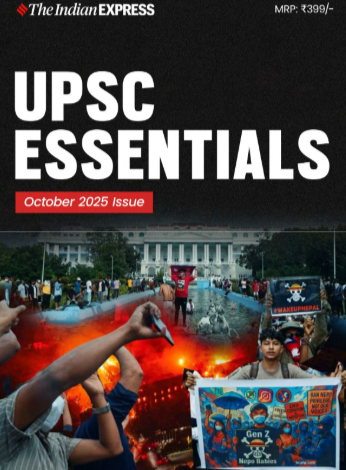
Read UPSC Magazine





- 01
- 02
- 03
- 04
- 05



